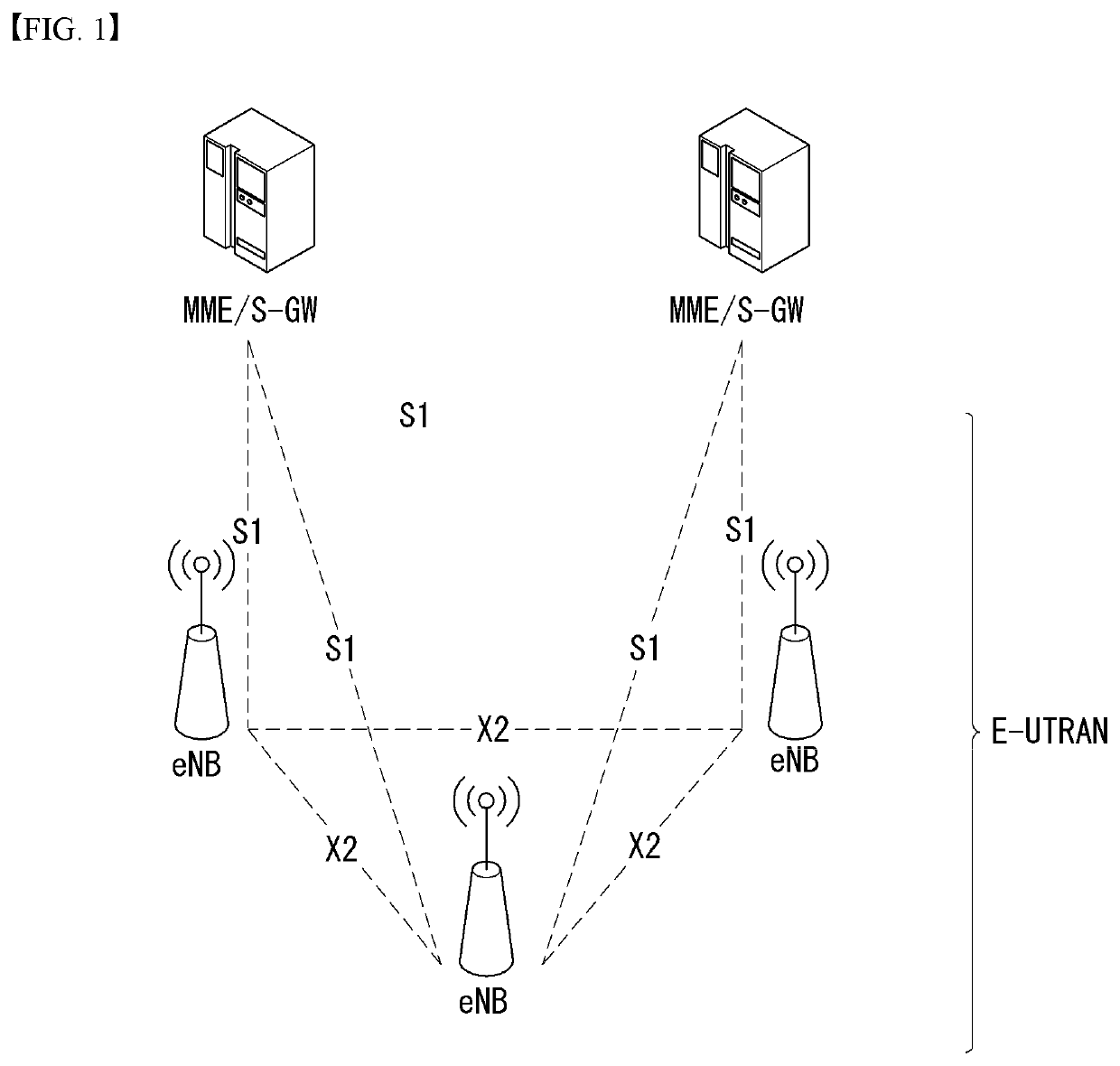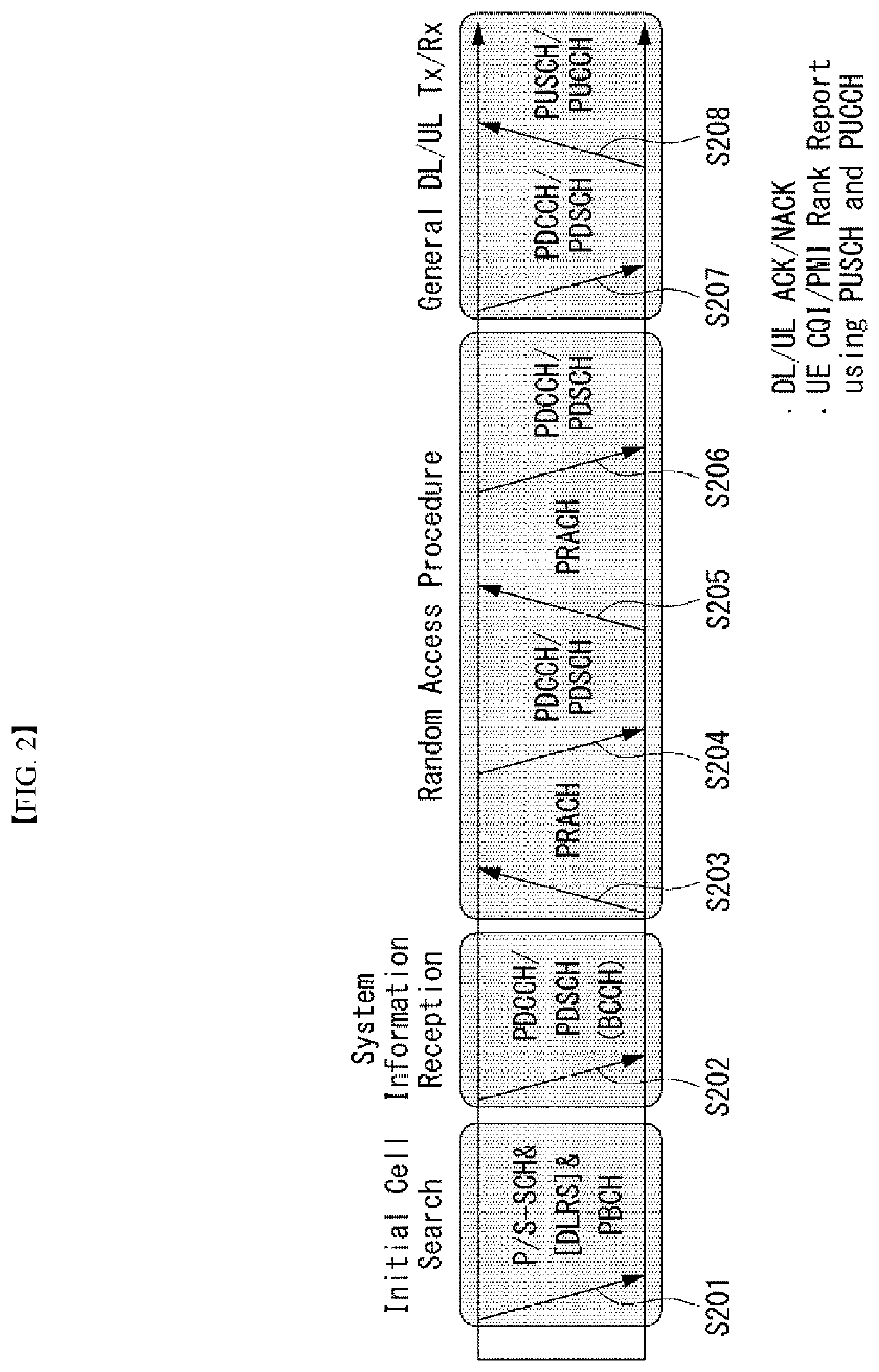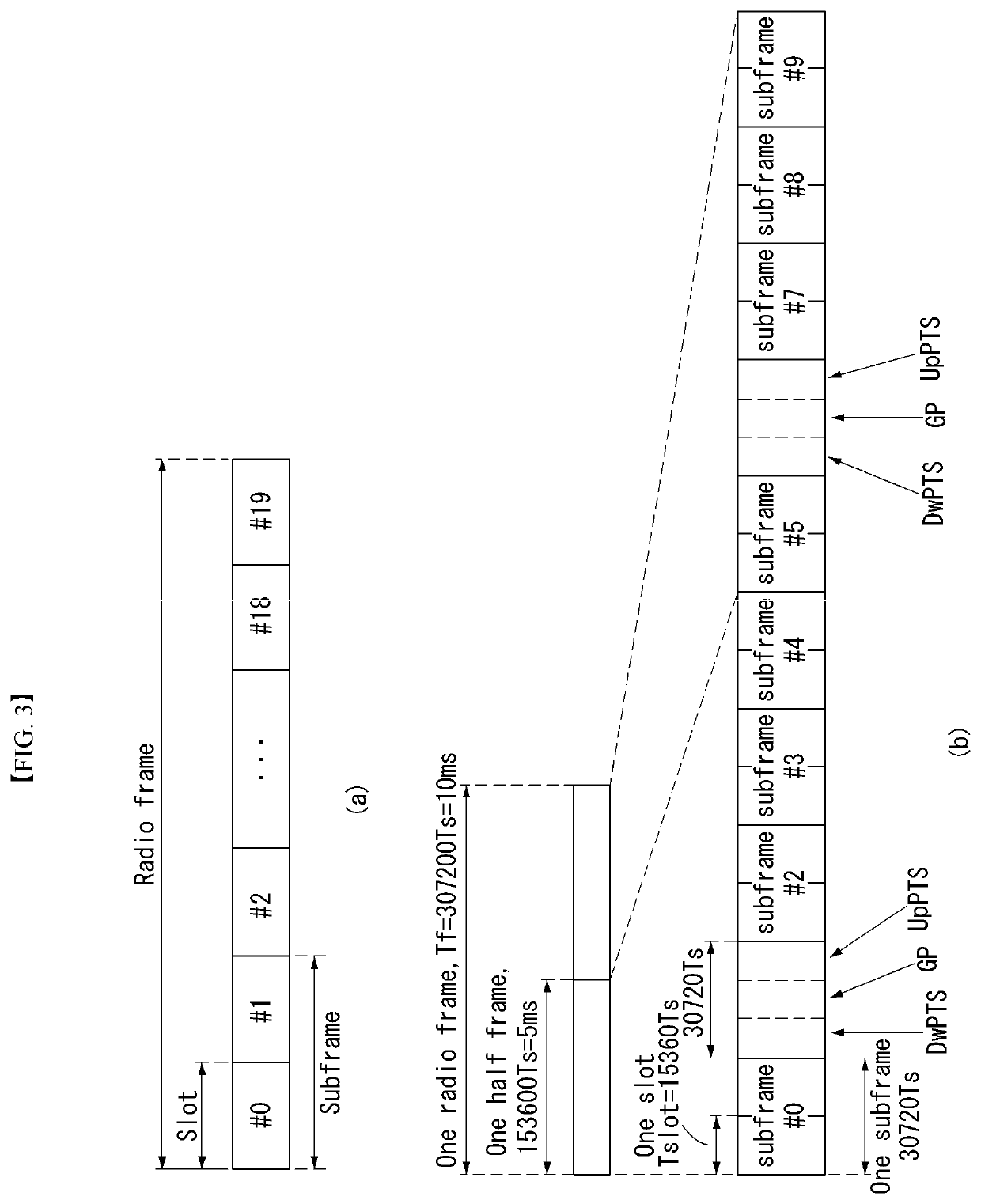Method and apparatus for transmitting and receiving data using non-orthogonal multiple access in wireless communication system
a wireless communication system and multiple access technology, applied in the field of wireless communication system, can solve problems such as shortening of resources
- Summary
- Abstract
- Description
- Claims
- Application Information
AI Technical Summary
Benefits of technology
Problems solved by technology
Method used
Image
Examples
first embodiment
nguishing Two DCIs in Near UE
[0187]First, in order for a near UE to cancel a signal of a far UE, a method for distinguishing two DCIs (DCI for decoding a signal of the near UE (e.g., PDSCH) and DCI for cancelling a signal of the far UE) received from a base station will be described.
[0188]The two DCIs may be represented by first DCI and second DCI.
[0189]At this time, the first DCI means DCI for decoding the signal of the near UE (e.g., PDSCH), and the second DCI means DCI for cancelling the signal of the far UE.
[0190]The first DCI means general DCI defined in the LTE(-A) system, and can be expressed as legacy DCI.
[0191]The second DCI may be expressed as assistant DCI (A-DCI) or the like.
[0192]The second DCI may be interpreted to mean new DCI transmitted by the base station to the near UE for MUST system operation.
[0193]That is, the eNB transmits existing DCI-n and the A-DCI-n to the near UE, and the near UE must distinguish the two DCIs (the existing DCI-n and the A-DCI-n).
[0194]Her...
second embodiment
itting TM Information of Far UE
[0240]When transmission mode (TM) between the near UE and the far UE is different, a second embodiment provides a method for transmitting the TM information of the far UE to the near UE to solve a situation where the near UE cannot correctly cancel a signal of the far UE.
[0241]As described above, when the TM of the near UE and the TM of the far UE are the same, the channel of each UE can be estimated using a common CRS or DMRS, and can be precisely rate matched to a DMRS resource element (RE) location.
[0242]However, a problem may arise when the TM of the near UE and the TM of the far UE are different.
[0243]For example, when the base station performs CRS based transmission and DMRS based transmission to the far UE and the near UE, respectively, the near UE cannot perform accurate channel estimation, and incorrectly assumes that an interference PDSCH is rate-matched to the DMRS RE location.
[0244]Therefore, the base station informs the near UE that the da...
third embodiment
mitting Interference Information which is Configured Differently Depending on Receiver Type (Symbol Level Receiver, Codeword Level Receiver)
[0259]The third embodiment provides a method for transmitting interference information configured differently depending on two receiver types (for example, an SL-ML receiver and a CWIC receiver) to the near UE.
[0260]Table 5 below shows an example of the interference information transmitted to the near UE depending on the receiver type.
TABLE 5Candidates ofNA informationSL-ML ReceiverCWIC ReceiverMCS (Mod order)OOMCS (TBS)XOPower (PA, PB, singleOOalpha, multipe alphas)MUST on / offOO(Power, dedicated field)CRNTI(CW scrambling)XOCRNTI(DCI SS)XO when overhearingCRNTI based DCI-fCRNTI(DCI CRC)XO when overhearingCRNTI based DCI-fResource allocationO (location of theO (correct value)interference RB inthe scheduled RB)RV, NDIXOLayer indexOODemodulation RSO / XO
[0261]In Table 5, an ‘O’ value indicates necessary information (or interference information transm...
PUM
 Login to View More
Login to View More Abstract
Description
Claims
Application Information
 Login to View More
Login to View More - R&D
- Intellectual Property
- Life Sciences
- Materials
- Tech Scout
- Unparalleled Data Quality
- Higher Quality Content
- 60% Fewer Hallucinations
Browse by: Latest US Patents, China's latest patents, Technical Efficacy Thesaurus, Application Domain, Technology Topic, Popular Technical Reports.
© 2025 PatSnap. All rights reserved.Legal|Privacy policy|Modern Slavery Act Transparency Statement|Sitemap|About US| Contact US: help@patsnap.com



